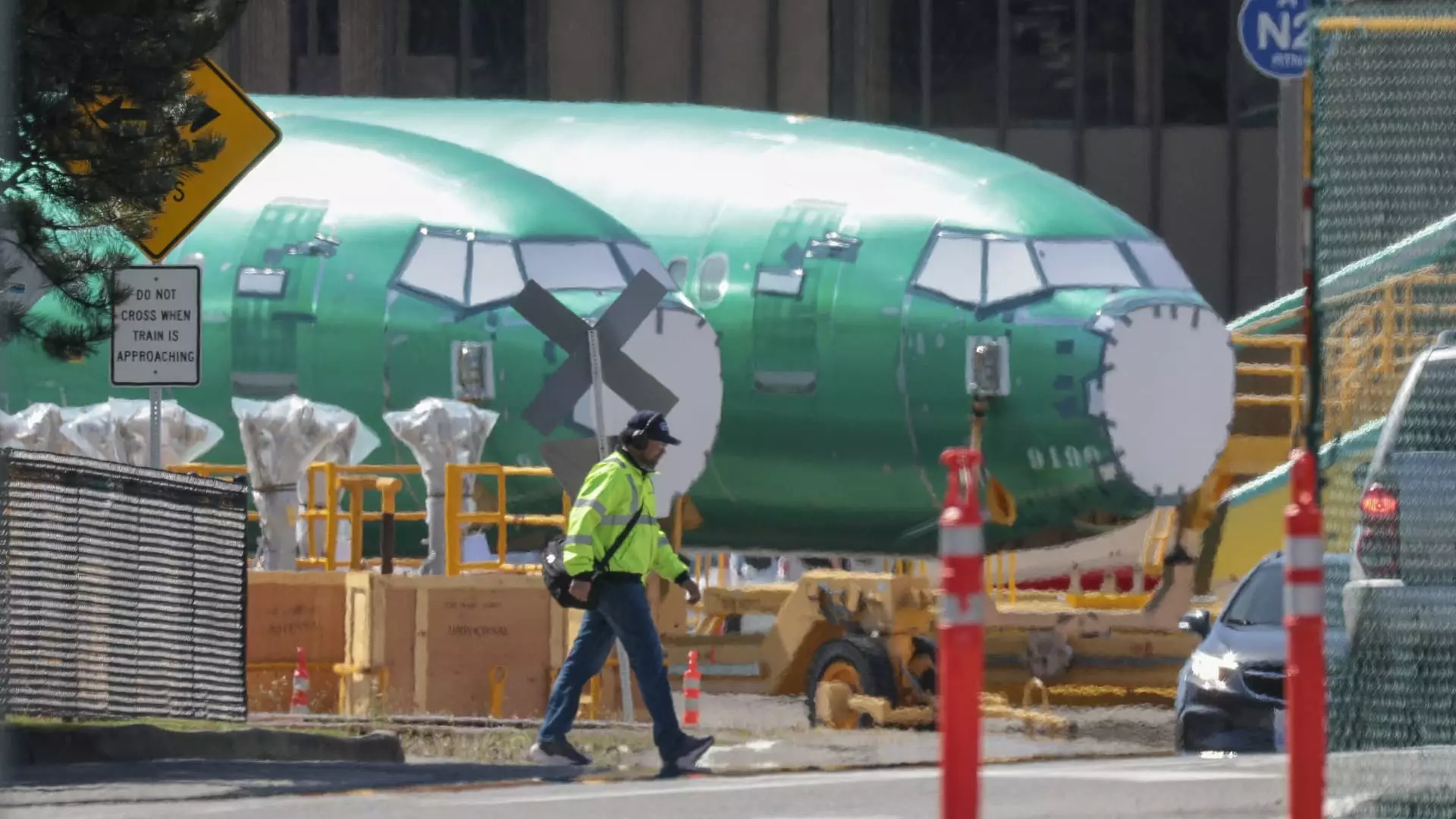In a climate where many companies falter under pressure, Boeing is attempting a significant comeback. Under the new leadership of CEO Kelly Ortberg, the aerospace giant is seeking Federal Aviation Administration (FAA) approval to ramp up production of its highly desired 737 Max jets from 38 to an ambitious 42 units per month. Following a dismal financial backdrop over the last few years, this aspiration stands not only as a statement of intent but as a critical calibration of Boeing’s operational capacities in an industry finely tuned to the regular rhythm of production and delivery. The numbers are worth noting: Boeing reported a first-quarter net loss of $31 million, a marked improvement from the staggering $355 million loss recorded the previous year. This indicates a potential rebound, as revenues climbed 18% to $19.5 billion—slightly exceeding analysts’ estimates. Despite this, it’s imperative to examine why such a company with a storied history remains bound to a precarious wire.
Navigating a Mixed Bag of Gains and Losses
On the surface, Boeing’s financial recovery appears promising, with a cash burnout of around $2.3 billion marking a significant decrease from the $4 billion loss in the first quarter of 2024. This shift could potentially reignite investor interest, as reflected in the 4% increase in its premarket shares following the earnings report. However, lurking behind the façade of progress lies a host of challenges—chief among them, global tariffs that have the potential to destabilize pricing structures for both aircraft and their parts. Boeing finds itself in the crosshairs of President Donald Trump’s trade war, a situation that could inflame costs and hinder future growth prospects. This scenario underscores a critical aspect of modern economic realities: policy decisions can and do wield considerable influence over corporate trajectories. Boeing must tread carefully, as an inhospitable trade environment can quickly erase gains.
The Human Element: Employee Sentiment on the Decline
While fiscal data presents a compass leading toward recovery, internal sentiment within Boeing is less rosy. An employee survey revealed that only 27% of respondents would highly recommend the workplace, with confidence in leadership waning significantly. This raises troubling implications about organizational morale, which is often the bedrock of sustainable success. Shouldn’t a company of Boeing’s stature be immune to such sentiments? For an industry that thrives on precision and innovation, a disengaged workforce spells potential disaster. Employees that feel undervalued may lead to drops in productivity and morale—a combination that can stifle innovation and drive damaging inefficiencies through the ranks. As Ortberg aims to pilot Boeing through its present turbulence, addressing these internal discontent issues becomes as critical as managing external pressures.
Seizing Opportunities Amidst Challenges
Despite setbacks in its defense sector—where revenue took a 9% hit during the first quarter—Boeing has touted engagement with key government contracts, including a landmark deal to build the U.S. Air Force’s upcoming fighter jet, the F-47. These contracts represent a potential resurgence in Boeing’s competitive edge within what has become a fiercely scheduled defense landscape. Furthermore, Ortberg’s push to pivot the company’s focus back to its core businesses—illustrated by Boeing’s recent plan to sell off parts of its digital aviation unit—can streamline resources and rejuvenate financial performance. Yet, the question remains: Will these measures be sufficient to create a sustainable recovery, or are they merely short-term fixes in a long-term crisis?
The Road Ahead: A Cautiously Optimistic Future
Boeing’s path forward is engrossed in a blend of cautious optimism and stark reality checks. As financial returns begin to highlight areas of improvement, the unique challenges posed by international trade dynamics and internal discontent cannot be overlooked. Ortberg’s strategy centers around capitalizing on an impressive backlog of $500 billion in products and services—a promising figure that could provide the necessary buffer as uncertainties loom. If executed deftly, delivering on their commitments can provide a control valve for investor anxiety and employee morale.
In this high-stakes environment, Boeing’s capacity to manage both internal culture and external pressures will ultimately dictate its trajectory. Amidst rising profits and ongoing losses, one thing is clear: navigating these tumultuous waters requires not only deft economic strategies but also an unwavering focus on the human elements that lie at the heart of its operations.

